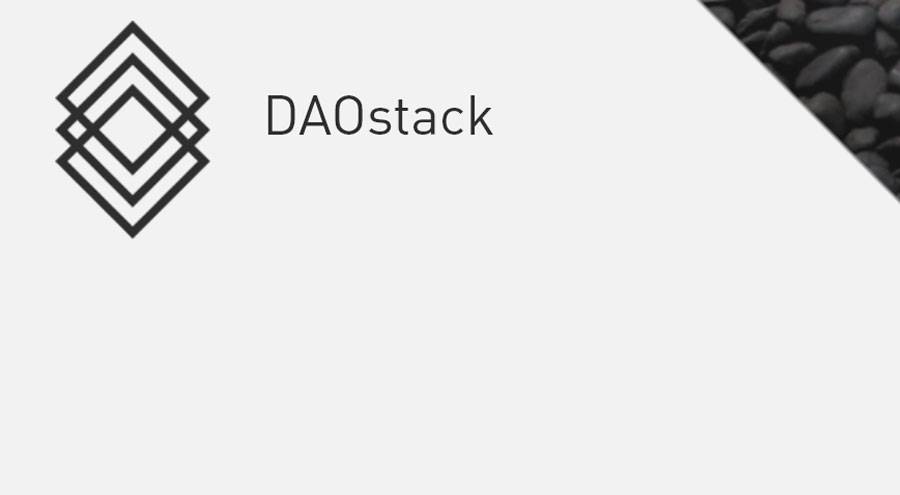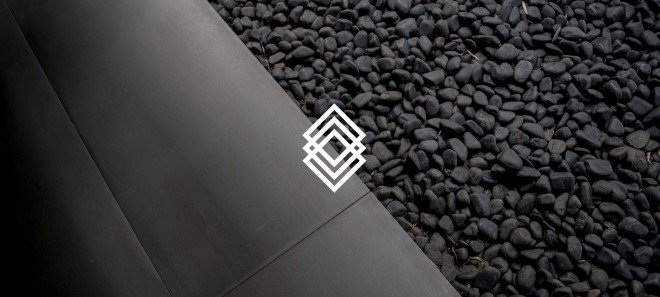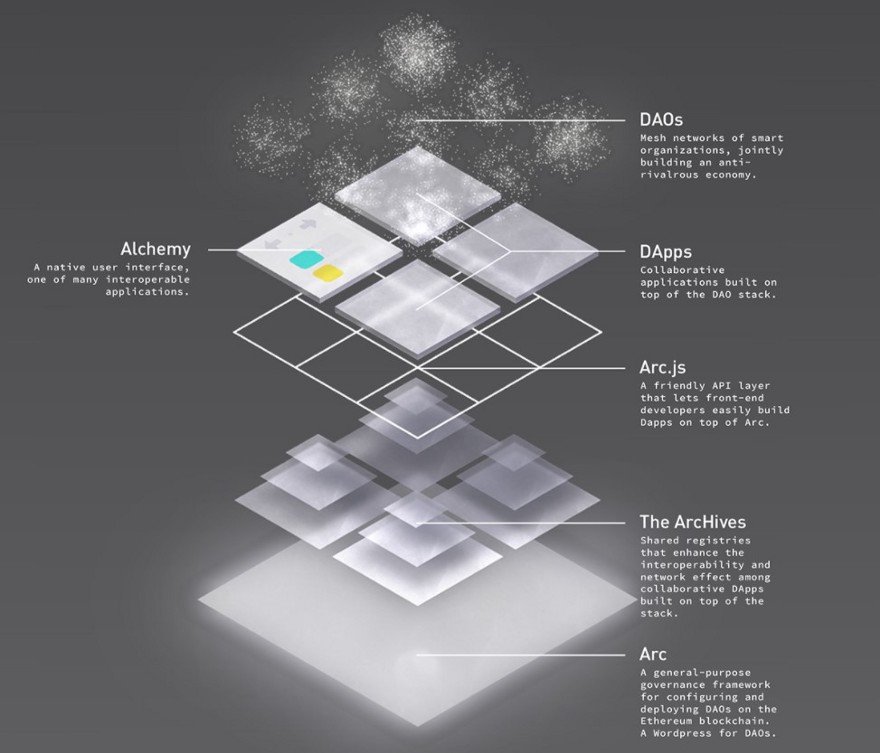DAOstack - A Single Platform For Data Management In Organizations

The Blockchain technology provided us with the tools and infrastructure needed for innovation and optimization in each industry, and at the same time it introduced a number of concepts that would be completely impossible before the advent of this technology. DAO (decentralized autonomous organizations) is one such concept; DAO is an organization that is managed and managed by intellectual contracts, their data, such as financial records, rules and regulations, are stored in block chains.
The DAO concept is full of promises and has already captured many people, but it lacks some important components that currently do not allow the DAO to be practical and feasible in the long term. Here is DAOstack, a block-based operating system that will provide a comprehensive framework that will make the creation and maintenance of DAO simpler and more manageable. This solution will fill all existing gaps and work on creating an Internet that will allow people to invest resources, skills and capital in various projects.
Who is DAOstack?
Daostack is a 4 year development project. The leading field of Matan (PHD physics focuses on string theory) and Adam Levi Taostak (PHD theoretical physics focuses on quantum effects on black holes), they have a star team of extremely intelligent researchers and developers. Daostack is registered in Gibraltar.
Why does DAOstack matter?
The DAO received a lot of attention from all in the blockade industry because they have a huge potential that could effectively change how organizations will exist and work in the future. The DAO has the opportunity to form an organizational structure that is completely open, and all its teams are organized with the help of economic incentives and smart contracts. DAO operations are based on various parties cooperating with each other to achieve a common goal, and these parties are guided by economic incentives that encourage a rational and reliable allocation of resources.
DAO sounds great on paper; an organization that can grow infinitely without losing its flexibility and consistency of its structure, but, unfortunately, at the moment there are a number of gaps that prevent DAO from deploying and working properly. The most important element that DAO lacks is a reliable and reliable decentralized management system, and this is what DAOstack plans to create.
DAOstack will be a block-based operating system that will provide people with an economic and management platform for the DAO, it will allow thousands of open source developers, freelancers and individuals with the appropriate resources to collaborate in the production of DApps. DAOstack will allow several people to contribute to one project, while ownership of the project remains in the hands of those who contribute the most to it. The easiest way to describe DAOstack is to think about it as WordPress DAO; just as WordPress made the site creation incredibly simple and intuitive, DAOstack plans to provide a similar solution for creating and maintaining DAO.
Decision

The DAO has a lot of topologies and structures, each of which has its pros and cons that makes these structures the same, so that they all work on a voting system that basically calculates the voting power of each side (depending on the number of tokens, which they have or their reputation). This voting system allows different parties to participate in the decision-making process of the organization and participate in its activities.
DAOstack will also have a similar voting system, which should be as simple as possible so that it is efficient, resilient, decentralized and scalable. DAOs made through DAOstack will require agents (parties that contribute to the organization) to submit proposals that need to make a decision, these proposals will be voted on with a simple yes or no. Proposals must have a deadline after which they will be closed and their acceptance or rejection will be made based on the number of votes cast before the expiry of the deadline.
The voting system of DAOstack will perform a silent end, which will prevent last-minute changes to the voices so that end-of-attack attacks can be avoided; if significant changes are made before closing the offer, the stack automatically extends the closing time for an additional day.
Since DAO is mainly controlled by decision-making voting, therefore, it should be expected that DAOs based on DAOstack will have a ton of proposals that will be submitted all the time, in order for the voting voting system to be organized and safe from overload, DAOstack will do use of the opening stack. There should be a certain number of sentences in the starting stack, which should be active, the sentences that will not be on this stack should be queued and they will have to wait until they can get a place on the open stack.
The waiting queue will sort proposals based on a ranking system that assigns ranks to each proposal on the basis of various factors, either party (including the party submitting the application) will be able to raise the bid rating by placing its tokens on it. A sentence that must have the highest rank will enter the opening stack as soon as the spot becomes available.
The power of each agent is determined based on their reputation, DAOstack will initially have a unified reputation system on the DAO, they can expand after it is created, and it will continue to grow.
The DAO table should consist of several components that must work together to create the complete structure on which the DAO acts, the stack must have a number of DAOs creating an ecosystem in which they all need to be able to interact with each other. This interoperability ensures that every DAO that will be part of the DAOstack will be able to maximize its cooperation potential. DAOstack will provide a management structure called Arc that will provide people with the tools they need to create, configure, deploy, and use DAO.

Arc will be the main component of DAOstack because it will provide people with everything they need to create, run and support DAO, the Arc structure will have its own open library of templates and DAO modules from which people can accept the ideas and components they need, form them according to their needs, and then use them when developing their DAO. Arc will be an open-source structure with a modular design to ensure that it remains highly scalable, and its library remains relevant and is becoming more diverse as more and more people add their own templates and modules to it.
The architecture of the Arc-structure will consist of a number of elements that will allow it to combine the principles of the management system with a smart contract, which means that Arc will be quite complex. To protect users from the complexity of this structure, DAOstack will introduce Arc.js; a JavaScript gateway that allows third-party developers to integrate third-party applications without requiring knowledge of the block chain. Arc.js will play a role in ensuring that the DAOstack ecosystem is not limited to block chain experts, ensuring that more people become part of this project and help it grow.

The DAOstack development team will provide the Alchemy community; DApp, which will provide users with an interface through which they will interact with the Arc framework and their DAO. Alchemy is a perfect example of how developers can create DApps and integrate them with open source DAOstack to make the ecosystem more user-friendly and retain it by adding new features as the community grows.
The Arc structure will be the DAOstack core, and Arc.js will make the interaction with this kernel simpler and easier, there will also be a third component called ArcHives, which will basically be a collection of shared entries in the DAOstack ecosystem.
Main advantages
The modular design of Arc means that each new DAO automatically has a menu of ready-made control modules at hand. Users have the ability to select and select modules that best suit the specific needs of their organization, thereby making the development cheaper and more efficient using pre-built blocks that are easily accessible. This saves time, storage and operation costs.
As in any organization, growth welcomes new challenges. It often becomes obvious that the old way of doing things does not make sense, as companies grow. Since the DAOstack control modules are connected and reproduced, they can be easily changed and updated to create new rules in an ever-evolving organization. However, the change in these management modules is associated with their own problems. There are recommendations that come with changing the set of rules in the DAO.
The open structure of DAOstack expands the ecosystem of genuine cooperation. This ecosystem consists of many different but interacting DAOs that interact with each other. This allows users to create large-scale open source networks and business agreements in a fraction of the time and cost than is traditionally. Over time, the contribution of independent developers and new DAO companies built in DAOstack will create a database of templates, management modules and applications that the community will continually benefit from. The incentives that developers get to continue to contribute to the community will allow them to freely experiment with more and more management protocols.
DAOstack works for GEN
GEN is the native marker of the DAOstack platform. The basic operations in the DAOstack ecosystem, such as the promotion of proposals, will require spending or conducting a GEN. GEN will be distributed among depositors of value, through the very structure of DAOstack, stimulating development, promotion and adoption
- The cost of the token for 1 GEN = approx. $ 1 USD
- Presentation bonus of 10%
- Presentation: May 1-2, 2018 (the white list closes on April 30 at 4:00 GMT)
- Main sale: May 8, 2018 - June 7, 2018
- 40 000 000 total available / 60 000 000 total offer (plus another 40 000 000 coins that can be sold in the future Genesis DAO)
- Active development and close integration with partners such as Gnosis, who was also a leading investor.
Pre-delivery information
The pre-sale of DAOstack will begin from 4:00 GMT, May 1, 2018, and will end in 48 hours at 4:00 am on May 3, 2018.
During the pre-sale and main sale, 40,000,000 DAOstack (GEN) tokens are available. For both periods of the sale of the tokens, a common hard cap of $ 30,000,000 is installed.
During the preview, the tokens will be sold with a 10% bonus at the estimated basic selling price of 1 US dollar per token.
Only depositors on the white list can contribute to the pre-sale. The only currency currently accepted for pre-sale of DAOstack is ETH.
DAOstack is an ERC20 token, so it's important that investors use wallets that are ERC20 compliant to send funds to the DAOstack smart contract and get their DAOstack tokens.
information on the sale of the main token
The main sale of tokens will begin from 4 to 8 May 2018 and will end on June 7, 2018.
During the sale of the main token, 40,000,000 DAOstack (GEN) tokens are available, which is 67% of the offer - or 40%, if Genesis DAO members decide to measure the maximum possible GEN in the future. For this period, a hard cap is set in the 30,000,000 US dollars.
During the main sale of tokens, the tokens will be sold at an approximate price of 1 GEN for 1 US dollar (equivalent to ETH). The exact price will be calculated based on the results of previous sales and announced at the beginning of the main sale. The only currency currently accepted for the sale of DAOstack tokens is ETH.
Distribution of GEN

Road map

Development team
3 out of 9 team members have experience with blockchain technology.
The team working on DAOstack consists of 9 members with decent working experience in the field of software development and business development, the team is actively working in the DAOstack (which has 1.1K members). The whole team is underway:
CEO and architect Matan Field, who has a Ph.D. in physics he has been working on blockchain technology since 2014 and is a well-known expert in the field of decentralized management.
WHO Adam Levy also holds a Ph.D. in physics, he has worked with the code for more than two decades, and is also well versed in the theory of games and the technical side of blockchain technology.
The advisory group of this project consists of two people, one of whom (Jordan Greenhall) is co-founder and former CEO of DivX, he also participated in the development of Backfeed technology (the previous company Matan Field). In general, the team of consultants seems to have a lot of experience in the development of business and software.


Conclusion
We all know that 90% of ICO will not be within 2-3 years from release, but in particular blocked services based on ICO, work very well in the long term, after high-speed blockchain projects. DAOStack can be one ICO, which because of its use, the team and advisors could support themselves in the long term by becoming the household name. If they can stick to their roadmap and have a good reputation in the market, this is likely to be the top 20 ICO of 2018. Despite the huge hard cap, due to the small number of tokens, this can do very well, here if the price of the token 1 US dollar 1 = 1 at the entry point can be stabilized after it hits the exchange. Definitely one to follow during its public sale and one day to hit the stock exchange.
To find the necessary information about the DAOstack project, click on the links below:
- Website - https://daostack.io/
- White paper - https://daostack.io/wp/DAOstack-White-Paper-en.pdf
- ANN - https://bitcointalk.org/index.php?topic=3334839.0
- Telegram - https://t.me/daostackcommunity
Author by: thiokoentjoan123
https://bitcointalk.org/index.php?action=profile;u=1091812
Komentar
Posting Komentar